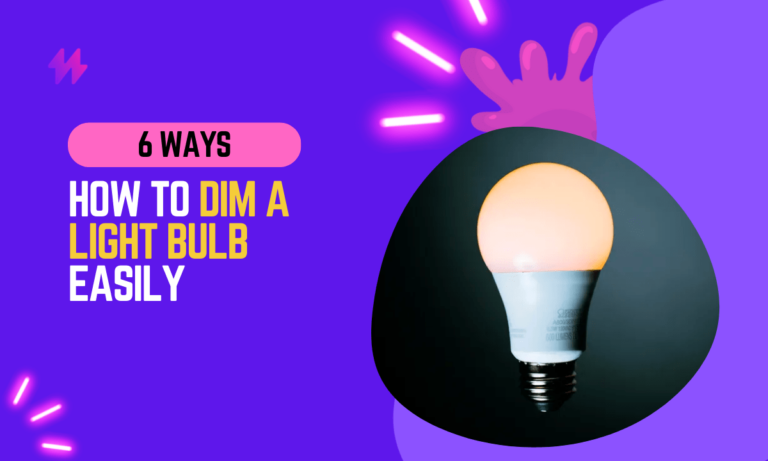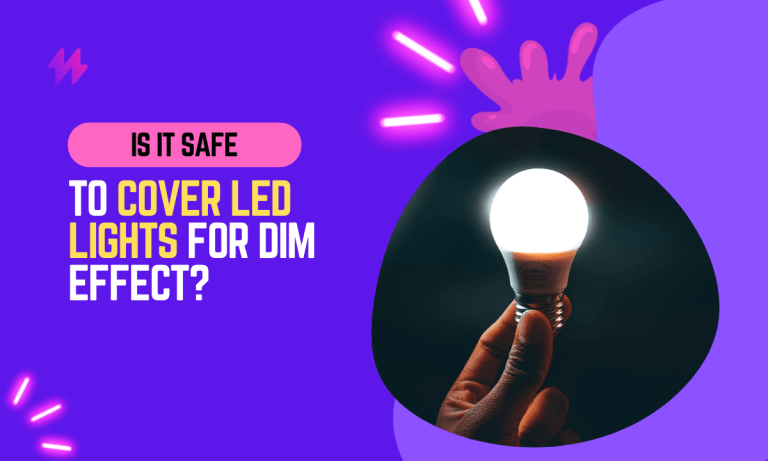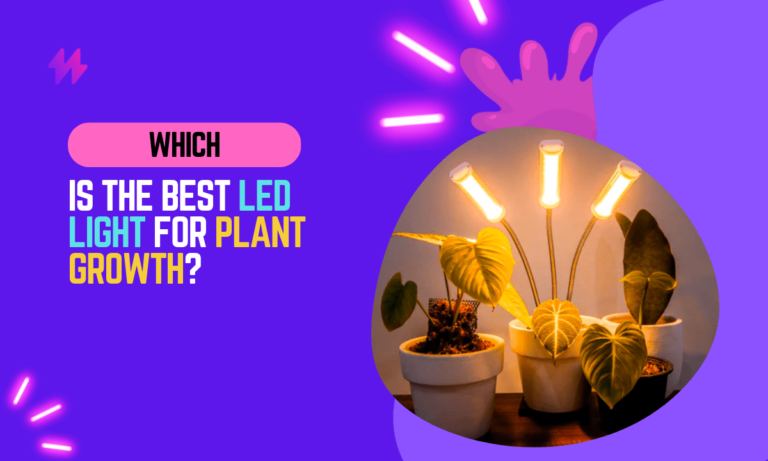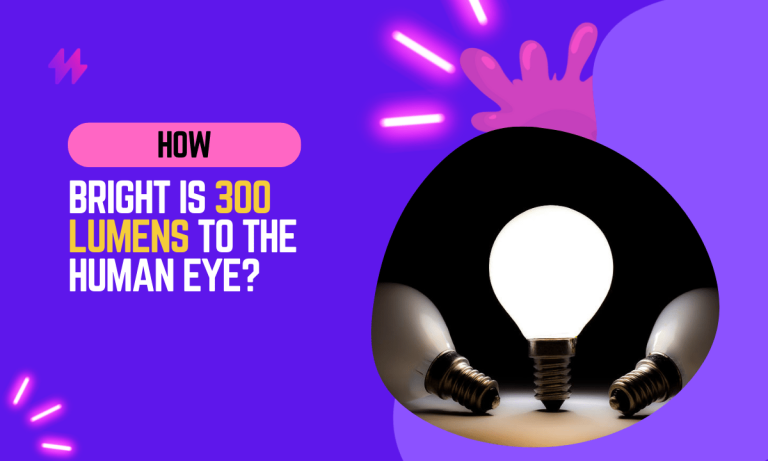How to Make Pink on LED Lights?

LED lights have revolutionized the way we illuminate our spaces, offering a wide array of colors to suit any mood or occasion. Among the myriad hues available, pink remains a popular choice for its calming and romantic ambiance. But how to make pink on LED lights? Is it even possible? In this guide, we’ll explore the possibilities and provide you with four proven ways to achieve that perfect shade of pink.
To create the desired pink illumination using LED lights, one effective method is to combine red and blue LED light colors, which can produce various shades of pink. Additionally, utilizing smart LEDs or RGB strip lights allows for greater flexibility in adjusting the color temperature and achieving that perfect pink light tone for your space.
Is It Possible to Create a Beautiful Pink Light on LED Lights?
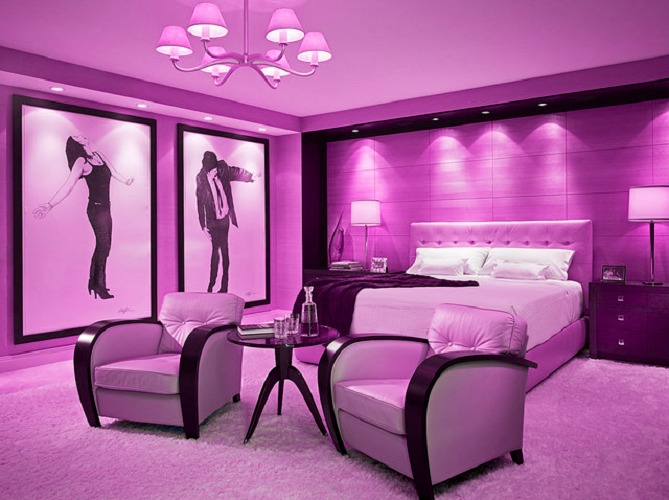
Yes, it is entirely possible to create a stunning pink hue using LED lights. The trick lies in understanding the color spectrum and combining the right light sources to achieve the desired shade. While it might seem challenging, especially for those new to LED lighting, we’ve compiled four foolproof methods to make pink on LED lights.
To achieve a captivating pink tint in your room, consider investing in smart lights that can easily adjust their hues. With the right light design, you can transform a gaming room pink while enjoying the versatility of color changing LEDs to craft the perfect ambiance.
Effective Methods to Create Pink on LED Lights: 4 Proven Ways
- Use Red and Blue Light Together: Pink is essentially a combination of red and blue. By adjusting the intensity and balance of these two colors, you can create various shades of pink. Experiment with different ratios until you achieve the perfect tone for your space.
- Color Filter: Another effective method is to use color filters. Place a pink filter over your LED light source, and voila! You have an instant pink glow. Color filters are available in various shades, allowing you to customize the pink to your liking.
- Color Changing Light: Opt for LED lights with color-changing capabilities. These lights often come with a remote control that allows you to cycle through a spectrum of colors, including different shades of pink. This is a convenient and versatile option for those who enjoy changing the ambiance of their space frequently.
- Smart LED Lights: Invest in smart LED lights that can be controlled via a smartphone app or voice commands. These lights often come with pre-set color options, including various shades of pink. Simply select your preferred shade with a tap on your phone, and watch your space transform.
How to Create Stunning Pink LED Lights: A Guide to Using Your Remote

If you’ve opted for LED lights with a remote control, you have the added benefit of easily customizing your pink. Here are five popular shades you can create:
To further enhance your mood lighting, consider exploring how different colors interact with your chosen LED bulb. By adjusting the combination of red, green, and blue light beam configurations, you can find the perfect way to make pink lights that reflect your desired ambiance, from a soft strawberry-pink to a more pronounced dark pink hue.
Exploring Rose Pink: A Guide to Making Pink on LED Lights
Increase the intensity of red and slightly lower the blue to achieve a soft and elegant rose pink. Here’s a short video on how to make a hot rose pink color with LED light.
To achieve a lovely Rose Pink on your LED strip lights, follow these simple steps using the DIY preset on your controller:
When utilizing LED light strips to create your ideal hue pink, experimenting with different combinations of red and blue hues can yield beautiful results. Many LED users find that adjusting the light output to include certain colors, such as warmer incandescent and cooler fluorescent tones, can enhance the overall light feature in their rooms.
- Access the DIY mode by pressing the designated button on your controller. Initially, the LED light will be white since the default setting has all RGB colors (Red, Green, and Blue) turned up to the maximum.
- Begin by turning down each color to 0 using the remote. Hold the down buttons for approximately 10 seconds to ensure each color is at its lowest setting.
- Once all colors are turned down, start by turning up the ‘Red Color’ 24 times, followed by the ‘Green Color’ 4 times, and finally, the ‘Blue Color’ 4 times.
- Congratulations! You’ve successfully created a beautiful ‘Rose Pink’ ambiance on your LED strip lights. Enjoy the romantic glow in your space.
Exploring Hot Pink: Creative Ways to Achieve Pink on LED Lights
Equalize the intensity of red and blue for a vibrant and energetic hot pink. Ensure you are utilizing an unused DIY preset for this process.
One creative approach to achieving the desired pink illumination is to integrate blue lights with a touch of white fluorescent for a balanced effect. By adjusting the intensity of light colors, you can follow room light preferences to produce an understated color that harmonizes with your existing decor.
- Press the assigned controller button to transition to the DIY preset on your LED light.
- Confirm that your Red, Green, and Blue lights are entirely off. Turn each of them down by pressing and holding the ‘down’ button for 10 seconds for each color, as previously instructed.
- Proceed to turn the red light all the way up. Then, press the ‘up’ button for the blue light twice.
- Voila! You’ve completed the process, and your LED lights are now set up accordingly.
How to Create Strawberry Pink on LED Lights
Enhance the red and reduce the blue to create a sweet and subtle strawberry pink.
When experimenting with light colors, be sure to pay attention to the comments on how different displays may affect the appearance of your desired shade. Additionally, incorporating some white incandescent into your setup can help maintain a low-color temperature while achieving variations in the blue color for that perfect pink tone.
- Access the unused DIY preset and lower all colors to 0.
- Press the ‘Red Button’ 10 times, the ‘Green Button’ 1 time, and the ‘Blue Button’ 1 time.
- Congratulations, you’ve successfully created a delightful ‘Strawberry-Pink’ hue on your LED strip light. Enjoy the sweet ambiance in your space!
Exploring Dark Pink: Illuminate Your Space With LED Lights
Diminish the intensity of both red and blue for a sophisticated and darker pink.
Adjusting the red and blue light colors can greatly impact the overall effect of pink illumination. Be mindful of the light colors comments regarding how subtle changes can enrich the visual experience in your space.
- Navigate to the unused DIY preset and bring each color down to 0. As before, you can accomplish this by pressing and holding the “down” button for 10 seconds for each color.
- Now, press the ‘up’ button six times for ‘Red’ and only once for ‘Blue.’
- Congratulations! You’ve successfully created a rich and dark pink hue on your LED strip light. Enjoy the cozy atmosphere it brings to your space!
Exploring Pastel Pink: How to Make Pink on LED Lights
Lower the intensity of both red and blue to create a delicate and calming pastel pink.
To achieve the perfect ambient glow in your space, explore using adjustable LED lights that let you experiment with different color intensities. The interplay between these hues can significantly enhance your overall lighting design, crafting an inviting atmosphere that highlights your decor.
- Lower the Red, Green, and Blue lights to 0 on your DIY preset.
- Once they are all turned down, press ‘up’ for ‘Red 15 times’, ‘Green 4 times’, and ‘Blue 4 times’.
- There you have it! Hopefully, now you encounter no issues with making Pink LED Lights.
Optimal LED Light Colors: Best Light Shades for Your Gaming Room
For gaming enthusiasts, the right lighting can significantly enhance the gaming experience. Pink LED lights offer a unique and immersive atmosphere for gaming rooms. The soft glow can reduce eye strain during extended gaming sessions, providing a comfortable and visually appealing environment.
For gamers, the phenomenon of ‘Gamer Rage‘ is all too familiar during intense gaming moments. Pink LED lights, unlike other colors, can play a unique role in helping you cool down in such situations. With the knowledge of how to make pink LED lights, you can effortlessly transform your gaming room using our instructions.
Pink, being a non-intrusive color, is not harmful to your eyes. This quality allows you to engage in extended gaming sessions without the risk of headaches. Specifically appealing to female gamers, pink serves as an ideal hue to express both vitality and calmness within their gaming spaces.
Moreover, pink has the remarkable ability to uplift formal and dark designs, and its association with femininity adds a touch of sophistication. It possesses the power to metamorphose a dull, shadowy area into a vibrant space. Opting for a bold color like pink can contribute to creating an overall more upbeat ambiance in your gaming haven.
So, whether you’re looking for a calming atmosphere, a touch of femininity, or a vibrant gaming space, pink LED lights offer a versatile and visually pleasing solution for gamers.
When setting up your gaming room, consider the influence of color selection on mood enhancement. The flexibility of pink LED lights allows gamers to tailor their environment to match their preferences, ensuring each gaming session is both enjoyable and visually striking.
FAQs: Making Pink on LED Lights Explained
Q: How do you make pink light?
A: Making pink light involves adjusting the intensity and balance of red and blue light sources until the desired shade is achieved.
Q: What makes my LED light color pink?
A: Pink LED light is typically created by combining red and blue light in varying proportions. Alternatively, color filters or smart LED lights can be used to generate pink hues.
Q: What are pink LED lights used for?
A: Pink LED lights are versatile and can be used for various purposes. They are popular for creating a romantic atmosphere, accentuating certain elements in a space, or even enhancing the gaming experience in a gaming room.
Q: Do pink LEDs attract bugs?
A: No, pink LED lights are not more attractive to insects than other colors. Insects are generally drawn to ultraviolet light, which is not present in pink LEDs.
When making pink light, the key is to find the right blend of red and blue light until the hue is just right. Using various methods, such as RGB LED technology, can expand the possibilities for illumination, making it easy to transform any space into a personalized sanctuary with pink light.
Conclusion: Making Pink on LED Lights and Beyond
In conclusion, creating the perfect shade of pink on LED lights is a nuanced process that enhances the visual dynamics of any space, making it vital for those wishing to inject personality and style into their environments. The key to achieving a vibrant and appealing pink lies in understanding the RGB (Red, Green, Blue) color model that LED lights typically use. By adjusting the intensity of red and blue light while minimizing green, one can experiment with different balances to produce various shades of pink—from soft pastels to vivid fuchsia. This manipulation of color ratios not only requires a technical understanding of how LED colors are mixed but also a creative eye for how lighting affects the mood and ambiance of a room.
Moreover, the advent of smart LED lighting technology has greatly simplified the process of customizing colors. Many modern LED systems come equipped with apps or remote controls that allow users to dial in precise color settings effortlessly, including an array of pink tones. These systems often include pre-set color options and the ability to save favorite custom colors, making it easy to switch atmospheres or adjust lighting to suit specific occasions or times of day. For those particularly keen on using pink lighting to influence room aesthetics, it’s also beneficial to consider the interaction of light with wall colors, furniture, and decorative elements, as these can significantly impact the perceived hue and effectiveness of the colored light. By thoughtfully combining LED technology with design elements, one can enhance both the functionality and the artistic appeal of their lighting solutions, making any space not only more visually striking but also more aligned with personal or branding styles.
How To Make Pink On LED Lights | Techniques for Achieving Pink on LED Lights
To achieve the perfect pink hue on LED lights, understanding how to mix color codes effectively is essential. Experimenting with different RGB values can yield a variety of pink shades; for instance, a combination of high red, moderate green, and low blue will often result in a vibrant pink. Knowing how to make pink on LED lights involves not just selecting the right color codes but also ensuring your setup allows for precise adjustments. Utilizing color filters can further enhance these pink shades, adding depth and richness to the illumination. By exploring these methods, anyone can learn how to make pink on LED lights that beautifully complement their space.
How to Make Pink on LED Lights | Mixing Color Codes for Optimal Pink
Mixing color codes is a straightforward way to achieve the perfect pink hue on your LED lights. To create this color, combine red and blue light in the right proportions. A common RGB setup involves adjusting the red channel to around 255 and the blue channel to about 192. This combination results in a vibrant pink that can be further modified by tweaking the intensity of each color to suit your preferences. Understanding how to make pink on LED lights requires experimenting with these values until you find the ideal shade for your space.
Using a color wheel can also assist you in mastering how to make pink on LED lights effectively. By selecting shades of red and blue that are close together on the wheel, you can achieve various pink tones, ranging from soft pastels to vivid fuchsias. It is essential to experiment with different ratios and combinations to discover the specific pink that resonates with your ambiance. Always keep in mind the overall lighting environment, as surrounding colors can impact how your pink light is perceived.
Using Color Filters to Enhance Pink Shades
Color filters can significantly improve the appearance of pink shades in your LED lighting setup. These filters work by selectively blocking certain wavelengths of light while allowing others to pass through. By applying a magenta or red filter over your LED lights, you can achieve a more vibrant pink hue. Understanding how to make pink on LED lights involves both mixing colors correctly and enhancing them with filters, creating a layered effect that brings depth to your lighting design.
Selecting the right color filter is key to achieving the desired intensity of pink. Transparent filters can provide a soft touch, while more opaque options can intensify the pink shade, making it more prominent in a room. Experimenting with different filters will give you insight into how to make pink on LED lights that perfectly suits your environment. The balance between the LED’s original color and the overlay of the filter is crucial in creating the ideal ambiance.
Customizing Your LED Light Setup for Pink
Creating the perfect pink ambiance involves careful selection and positioning of LED bulbs. Understanding how to make pink on LED lights requires not only the right color codes but also an awareness of bulb types that emit warm hues. LED bulbs with a color temperature around 3000K to 4000K can produce softer pink shades. Positioning these lights at different angles enhances the overall pink effect in the room. Experimenting with distances from walls and surfaces can also play a significant role in achieving the desired outcome, demonstrating that how to make pink on LED lights is as much about setup as it is about the color itself.
Selecting the Right Bulbs for Pink Lighting
Choosing the correct LED bulbs is crucial for achieving the desired pink hue in your lighting setup. The color temperature of bulbs can significantly impact how to make pink on LED lights effectively. Opt for bulbs specifically designed for color mixing, as they can provide a wider spectrum of light. High-quality RGB LED bulbs often come with dedicated pink tones that can simplify the process of how to make pink on LED lights.
Experimenting with different wattages can also enhance the pink effect in your space. Lower wattage bulbs may produce softer pink shades, while higher wattages can lead to more vibrant displays. It’s essential to consider the bulb’s color rendering index (CRI) as well. A higher CRI typically means colors will appear more accurately, making it easier to achieve the specific pink tones you desire.
Positioning Lights to Maximize Pink Effects
To achieve the best pink lighting effects, understanding the layout of your space is crucial. Focus on where to place your LED lights for optimal color distribution. Positioning lights in corners or near reflective surfaces can amplify the pink hue. Think about how to make pink on LED lights more vibrant by directing the light towards walls or ceilings. This technique helps create a soft, diffused glow that enhances the overall ambiance.
Experimenting with different heights and angles can also influence the intensity of pink lighting. Lowering the lights or tilting them can change the way pink reflects within the room. For those looking to truly master how to make pink on LED lights, consider layering multiple light sources together. This layered approach adds depth and richness to the pink shades, creating a more dynamic and inviting atmosphere.
Troubleshooting Common Issues When Making Pink
Achieving the perfect pink hue on your LED lights can sometimes present challenges. Understanding how to make pink on LED lights requires not only careful color mixing but also attention to potential issues that may arise. Color calibration problems can lead to unsatisfactory results, making it crucial to adjust settings properly to achieve the desired shade. Dimness or incorrect brightness levels can also detract from the vibrancy of your pink lighting. Addressing these common pitfalls ensures an optimal pink effect, enhancing the overall aesthetic of your space while maximizing the enjoyment of how to make pink on LED lights.
Fixing Color Calibration Problems
Color calibration issues can significantly impact how to make pink on LED lights. Incorrect settings may lead to unexpected hues or diminished vibrancy. To resolve this, begin by accessing your light’s color settings. Adjust the RGB values incrementally, testing the changes to align with the desired pink shade. Each small adjustment can lead to a more accurate representation of the color you want.
Testing your LED lights in different environments can also aid in fixing calibration problems. Variations in surrounding colors and light can affect the perceived shade of pink. Observing how your adjustments respond to various backdrops will help fine-tune your setup. This careful approach allows you to refine how to make pink on LED lights while ensuring consistent results across different settings.
Addressing Dimness and Brightness Levels
Dimness in LED lights can significantly affect the appearance of pink hues, making them look dull or washed out. To enhance brightness and ensure the optimal pink shade, it’s helpful to start with quality bulbs that provide adequate lumens. Adjusting the dimmer settings on compatible fixtures or using smart LED lights that allow brightness modification can create a more vibrant look. Understanding how to make pink on LED lights involves careful attention to these brightness levels, ensuring the pink effect is both vivid and captivating.
On the other hand, too much brightness can also distort the intended pink shade, leading to an overwhelming or harsh light. It’s essential to experiment with different settings and angles to find the sweet spot. By gradually adjusting the brightness while observing the color output, you’ll be able to strike the right balance. Mastering how to make pink on LED lights incorporates not only color mixing but also fine-tuning the brightness for a delightful ambiance.


